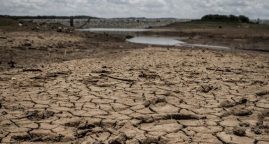Humanitarian partnerships: reality lags behind the rhetoric
January 2015. Just over a year after Typhoon Haiyan devastated parts of the Philippines important lessons need to be learnt about how international actors partner and work with national organisations.
The Philippines has consid- erably more local and national capacity to manage disaster response than many countries in the region. It also has a great deal of experience in dealing with disasters. Despite this, the scale and nature of the typhoon, and the storm surge it triggered, was initially overwhelming.
With the scale and frequency of disasters expected to increase globally, what President Benigno Aquino has called the ‘new normal’, the research raises important questions about the ability of partnerships to respond at scale to mega- disasters. If the international system is to meet its aspiration to place national actors at the centre of humanitarian response it still has a long way to go. The challenge for the international humanitarian system in the run-up to the World Humanitarian Summit in 2016 is to see contexts like the Philippines as places where the system must make real its aspirations to cede power and resources to affected people and national organisations.
Read the article on the HPN website
Related Articles
One year after the earthquake in Nepal
04/16/2016. Malteser International plans construction of medical facilities in outlying regions
A climate in crisis
04/27/2017. How climate change is making drought and humanitarian disaster worse in East Africa.
Scaling Up Climate and Disaster Resilience for the World’s Most Vulnerable
01/05/2016. Managed by the World Bank, GFDRR, a global partnership, help developing countries to reduce their vulnerabilities to natural hazards and adapt to climate change.





